Pharmaceutical Moisture Tester
-
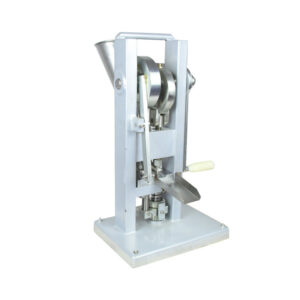
TDP-0 Single Punch Tablet Press
View Machines -
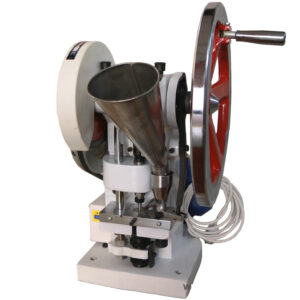
TDP-6 Single Punch Tablet Press
View Machines -
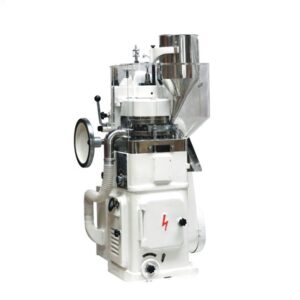
ZP17/19 Rotary Tablet Press
View Machines -
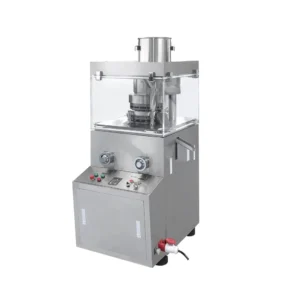
ZPW Rotary Tablet Press
View Machines -
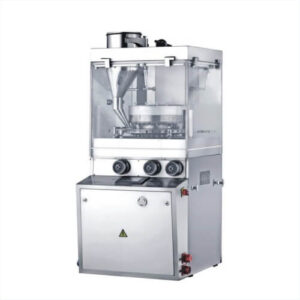
GZPL-680 Double Sided Rotary Tablet Press
View Machines -
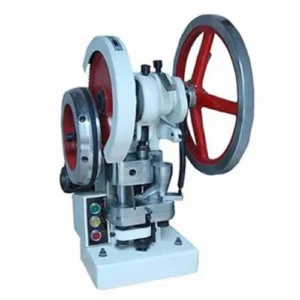
TDP-5 Single Punch Tablet Press
View Machines -
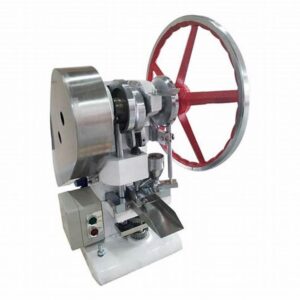
TDP-1 Single Punch Tablet Press
View Machines -
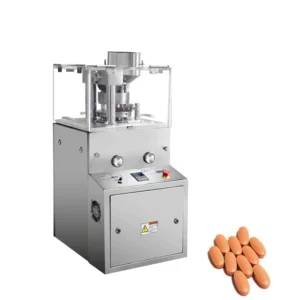
ZP11 Rotary Tablet Press
View Machines -
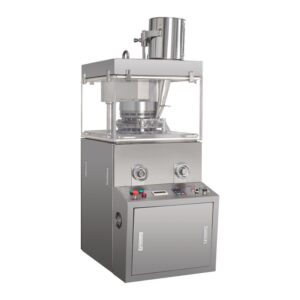
GW15D Rotary Tablet Press
View Machines
Introduction of Pharmaceutical Moisture Tester
Moisture content is vital in maintaining accurate pharmaceutical products during the processes of production. For example, moisture levels can affect the stability, appearance, dissolution rate and shelf-life of pharmaceutical products. This has led to the development of moisture testers as an indispensable tool for the industry. The various aspects of Pharmaceutical Moisture Testers like their types, working processes, applications, functions, future trends; roles and advantages are the areas being focused on by this article.
Understanding the Pharmaceutical Moisture Tester
Types of Pharmaceutical Moisture Testers
- Gravimetric Moisture Analyzers
Gravimetric moisture analyzers otherwise known as loss-on-drying (LOD) analyzers have been widely used in pharmaceutical industries. In these types of analyzers, sample weight loss is measured while heating it to evaporate its water. The difference between the weights before and after heating gives its moisture content. These offer high accuracy and precision in determining humidity.
- Karl Fischer Moisture Analyzers
Karl Fischer moisture analyzers are specifically designed to measure minute quantities of water in pharmaceutical samples. This technique involves a titration process where the water content in the sample reacts with iodine present in the Karl Fischer reagent. The endpoint or completion of titration is detected electrically leading to accurate measurements even at very low levels.
- Near-infrared (NIR) Moisture Analyzers
Near Infrared Spectroscopy is employed by NIR moisture analyzers to determine the total amount of water available in pharmaceutics samples. They operate depending on how much infrared light is absorbed by molecules within a sample due to their molecular structure characteristics as different molecules absorb infrared light differently hence one can directly quantify its moistness inside any material using them thus they provide fast analysis with minimum sample preparation needed.
- Capacitance Moisture Analyzers
Capacitance moisture analyzers are designed based on the measurement of dielectric properties for many different materials found within capacitors which involve the creation of electric fields by application of alternating potential differences that can measure the presence or absence of water content in them. These analyzers are appropriate for diverse pharmaceutical substances and allow for non-destructive testing.
How Pharmaceutical Moisture Testers Work
Gravimetric Moisture Analyzers
A sample, which has already been weighed in advance, is put inside a drying chamber.
The sample is heated at a given temperature to evaporate the moisture.
The sample weight loss is tracked continuously until it attains constant weight showing complete removal of water.
The difference between the pre-drying and post-drying weights gives the moisture content.
Karl Fischer Moisture Analyzers
One or more of iodine, sulfur dioxide (SO2), and a base are among the Karl Fischer reagents that are used to dissolve or mix the sample with it.
Iodine reacts with water in the sample to form iodide ions when it comes into contact with them from the reagent.
Potentiometric or coulometric methods are usually employed in detecting this endpoint during titration.
By determining how much reagent was consumed during that reaction, one can accurately determine the amount of moisture present in their samples.
Near-Infrared Moisture Analyzers
The light from near-infra-red rays falls upon this specimen while some rays are reflected while others pass through it and get absorbed by substances other than water present.
Determining if there is moisture present as well as its concentration requires analysis of this absorption spectrum that belongs to a sample being examined for moisture content determination purposes using near-infrared spectrophotometry techniques.
Absorbance data referring to moisture contents are correlated using calibration models built on standards containing known levels of water/moisture contents.
Based on spectral information from test samples, percentage compositions may be determined by calculating moisture content.
Capacitance Moisture Analyzers
An analyzer consists of two electrodes with a space between them into which we place our samples.
This causes polarization of water molecules by alternating electric fields applied to them within the materials where these devices have been provided including liquids.
Finally, the capacitance change is determined between the electrodes and this yields a measurement of sample moisture content.
Moisture content is calculated by the difference in weight before and after drying
Karl Fischer Moisture Analyzers
Mixing or dissolving the sample with Karl Fischer reagent containing iodine, sulfur dioxide and base,
Interaction between water present in the sample and iodine contained within reagents results in the production of ionized iodides during titration,
End-point detection (electrometrically) using the potentiometric/coulometric method is performed typically,
This allows accurate determination of moisture as the reagent used up is directly proportional to its presence in the tested specimen.
Near-Infrared Moisture Analyzers
The light that reaches or reflects from the sample after being directed on it by a near-infrared light source may be measured.
Calibration models based on known moisture levels are used to correlate absorbance data to moisture content, whereas calibration curves are employed for determining various components such as moisture contents among others.
Spectral information obtained from the samples enables one to calculate its moistness.
The moisture content of the sample is correspondingly measured as the change in capacitance between said electrodes.
Capacitance readings are converted to moisture content values using calibration curves.
Applications for Pharmaceutical Moisture Testing
Pharmaceutical moisture testing finds use at different stages of drug development, manufacture, and quality control processes:
Raw Material Analysis: Pharmaceutical ingredients and excipients must be checked for water content.
Formulation Development: Moisture content affects the stability and formulation of drugs. Moisture analysis helps optimize formulations for stability and shelf-life.
Manufacturing Process Control: Monitoring the amount of moisture during manufacturing prevents caking, agglomeration, or degradation that can adversely affect product quality.
Quality Assurance: Finished pharmaceutical products undergo moisture analysis to ascertain that they meet set specifications and regulatory standards.
Packaging: Testing packaging materials through moisture analysis ensures their integrity against any ingress of dampness into the pharmaceuticals they contain.
Storage Stability Studies: The extent of humidity determines how long a drug will last under various conditions while in storage.
Functions of Pharmaceutical Moisture Testers
Moisture Determination: What distinguishes pharmaceutical moisture testers is their ability to provide highly accurate measurements of water in samples meant for drug production.
Quality Assurance: This method of analysis guarantees that no pharmaceutical products would fall short regarding their quality state or regulations compliance standards.
Data Logging & Reporting: Modern types often come with data logging, analyzing and reporting features that help in documentation as well as meeting regulatory requirements.
Efficiency: Modern hygrometers are quickly able to be evaluated for the sake of business and improvement.
Versatility: Different kinds of moisture meters accommodate widely varying types of pharmaceutical materials and applications, giving flexibility in testing.
Compliance: Moisture testers are useful in assisting pharmaceutical companies keep up with the requirements and regulations specified by drug laws. They help in product quality, safety and efficacy.
Cost savings: The moisture testers save costs on manufacturing by preventing product losses caused by moisture issues and possible optimization of processes.
Most Commonly Asked Questions
What is a wetness analyzer?
Pharmaceutical wetness Analyzer is a specific device used for the estimation of water content in such pharmaceutical materials as raw ingredients, intermediates and finished products.
Why is moist testing essential in the pharmaceutical industry?
Moist content significantly affects the quality characteristics, stability and shelf-life of medicinal products. Therefore accurate determination of moisture guarantees that drugs work properly, do not degrade over time, and comply with regulations.
What are the different forms of pharmaceutical wetness meters?
Different principles underlie such common types as gravimetric analyzers, Karl Fischer titrators (KF), near-infrared (NIR) analyzers; and capacitance analyzers which determine the amount of electrical charge needed to change the water vapour into dry air within it.
How does a drug moisture analyzer function?
The principles may vary depending on the type. Gravimetric analyzers measure weight loss upon drying; Karl Fischer titration involves using certain chemicals to react with water to determine its quantity; NIR spectrophotometry measures light absorption at a particular wavelength corresponding to the presence or absence of water; the capacitive method uses changes occurring in dielectric constant whenever there is any alteration in capacitance caused by a change from the humid atmosphere into dry one or vice versa
What are some applications for pharmaceutical wetness meters?
It includes Raw material testing, formulation development, manufacturing process control and validation studies which include packaging evaluation & stability study.
What are the benefits of pharmaceutical wetness meters?
These include high precision, effectiveness, flexibility in use, compatibility with industry guidelines like FDA cGMPs, process optimization which brings about cost savings, and avoiding any product moisture-related issues.
Are there any future trends in pharmaceutical moisture testing?
Yes. This is mainly automation and integration with manufacturing systems, miniaturization for portability; advancement in sensing technologies; real-time monitoring; and data science via artificial intelligence.
What role do pharmaceutical moisture testers play in quality control?
Moisture analyzers act as proof that the water content is within an acceptable range set by regulatory authorities and that the drug will not degrade or lose potency.
How can pharmaceutical moisture testers contribute to process optimization?
The moisture levels can be estimated during the production thus enabling fine-tuning of the processes preventing wastage of materials due to variations in compositions thereby ensuring that all products manufactured meet similar standards.
Are there any guidelines for using pharmaceutical moisture testers?
Manufacturers usually issue guidelines for calibration and control procedures during sample preparation testing methods. Good Manufacturing Practice (GMP) and other relevant pharmacopeial standards must be followed at all times as well.
